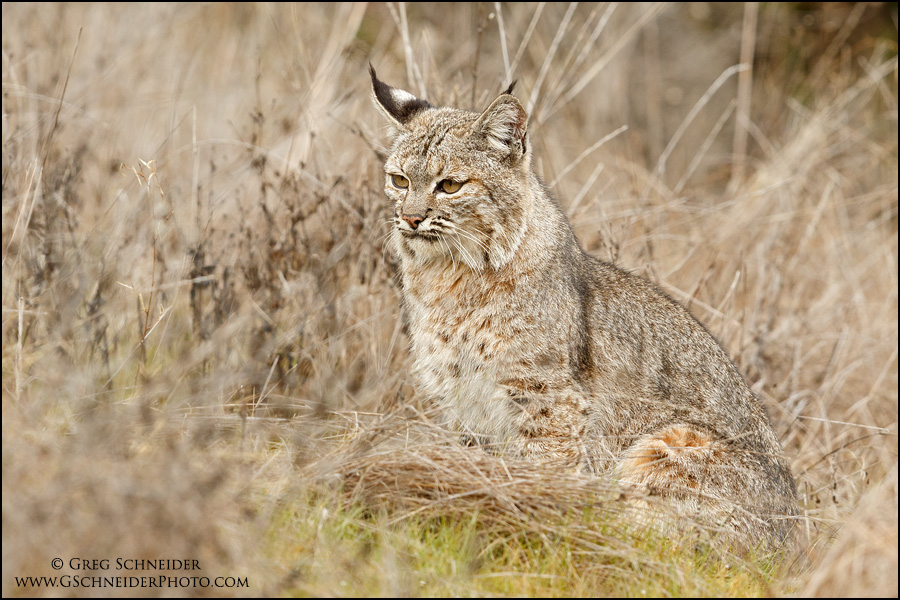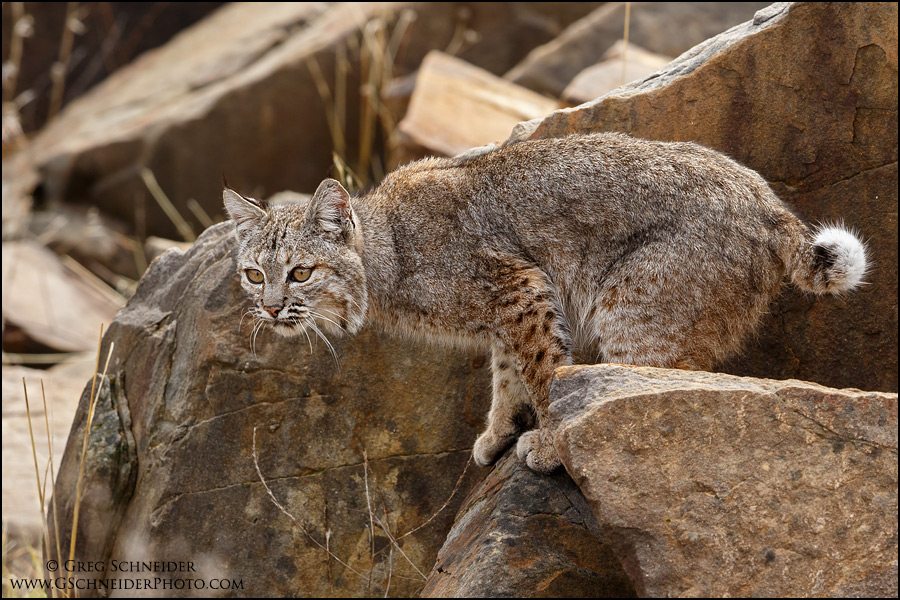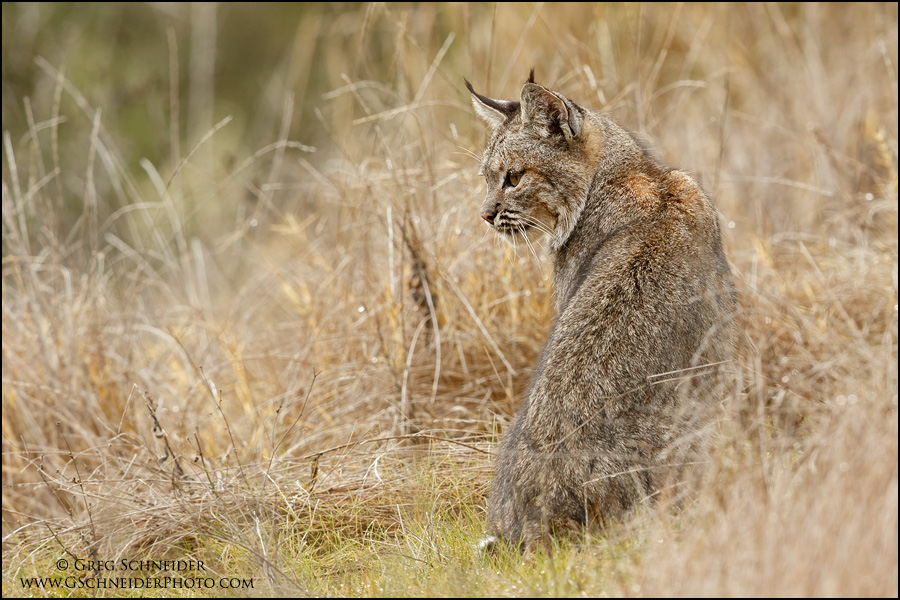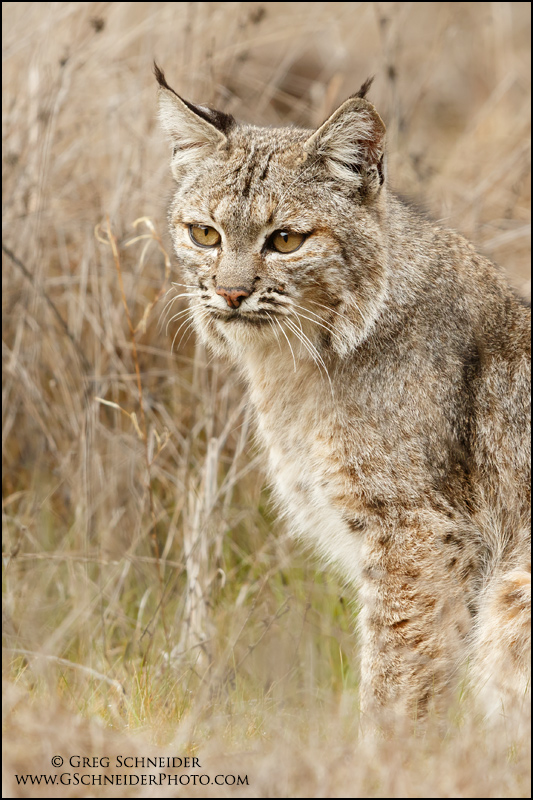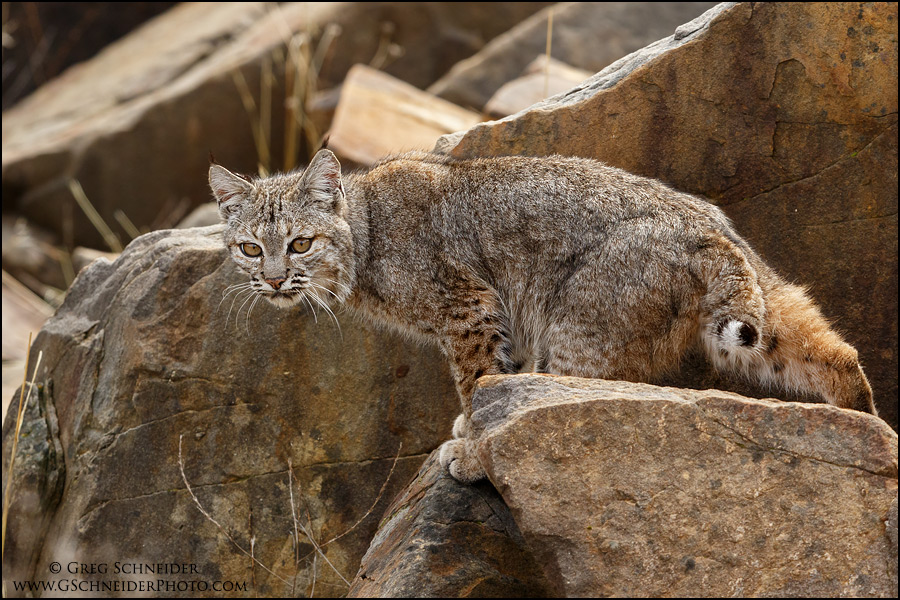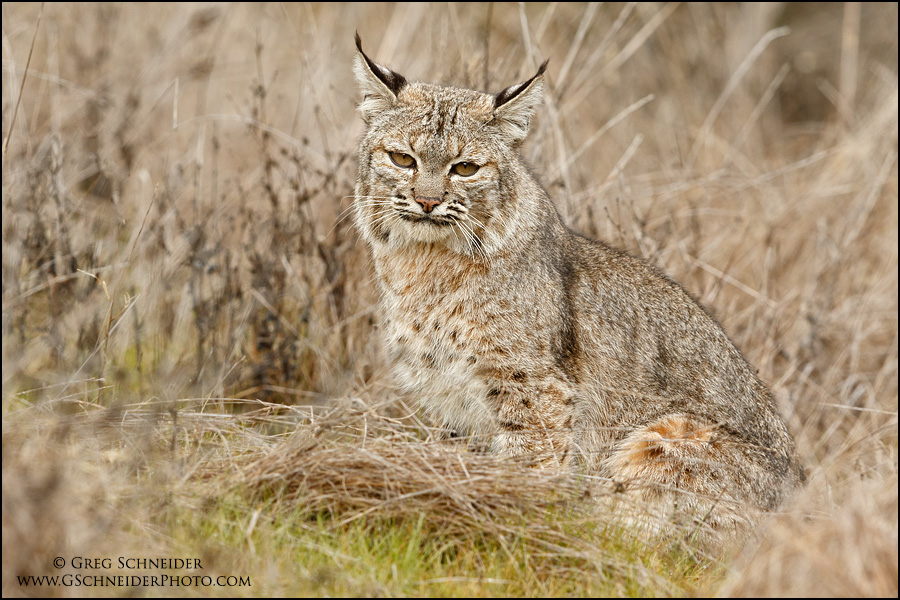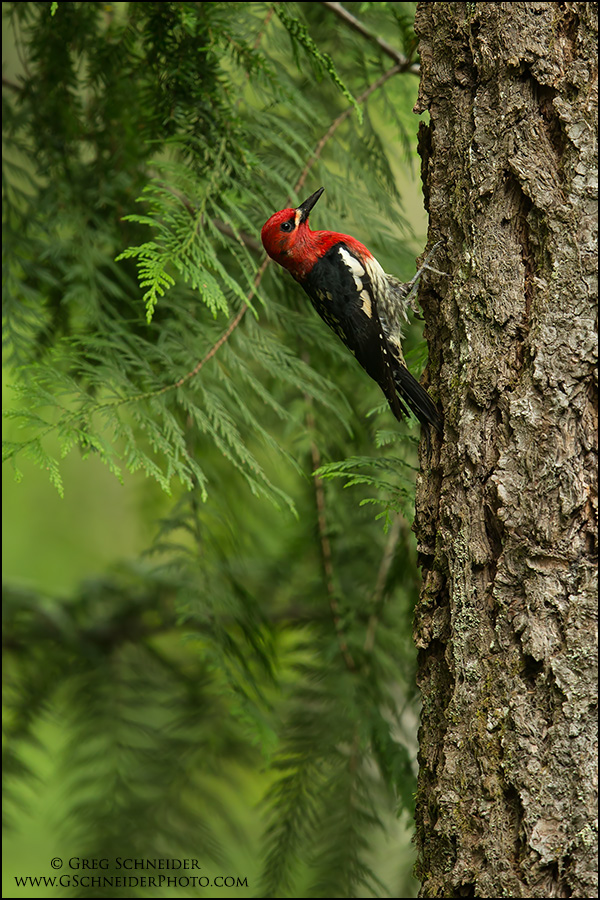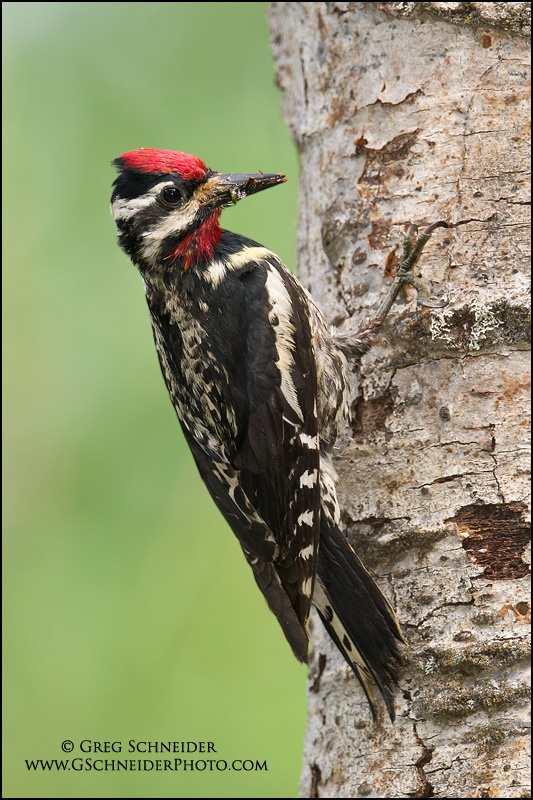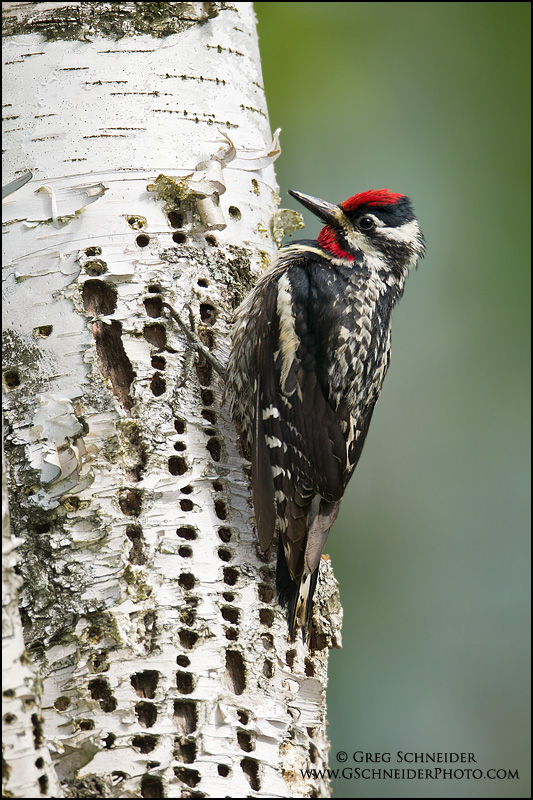Tagged: woodpecker
Bobcat encounter
A few weeks ago while photographing birds in Central California’s scenic oak woodlands, my peripheral vision picked up movement closer to the parking lot. I quickly swung the camera around, thinking the fuzzy shape might be a fox, but to my astonishment saw the characteristic cat shape and tail of a bobcat. This was an animal I had never seen before, and was not expecting to obtain any good photos before it disappeared.
I quickly caught up to it as it began navigating its way down a boulder-strewn hillside. At this point I was able to photograph a few look back poses, and I started to plan where to position myself next. I had a rough idea of where the cat might be going, and was able to quickly walk ahead on an adjacent trail. As expected, the bobcat began walking through a grassy meadow after making its way down the boulders. It paused a few times, seemingly scanning for prey, and completely tolerant of my presence. It eventually sat down for a few minutes, then without warning ran off and could not be relocated.
In total I had 8 minutes with this individual, and I’m really pleased with the range of poses and photos I was able to capture in such a short length of time.
Red-breasted Sapsucker in habitat
I’ve had mixed success shooting red-breasted sapsucker on the west coast. Despite visiting several locations where other photographers have easily obtained great photos, I was always hampered by either not finding them, or having uncooperative birds.
On one occasion did obtain several photos, and although the distance was much farther than I would prefer, I used slight more creative cropping to frame the bird in a pleasing way. Traditionally the general rule of thumb would have been to crop with the bird in the lower left part of the frame, but to my eye that left me with far too much of the tree trunk in the frame. To me this gives a great perspective on the typical rain forest habitat this bird lives in.
Yellow-bellied Sapsucker
A very sharp looking woodpecker, the yellow-bellied sapsucker is quite common further north in Ontario, especially in the Algonquin Park area. Their distinctive “wells” that they drill in trees serve as a food source for hummingbirds, who arrive in the northern forests well before plants begin to flower, and are thus very dependent on the sapsuckers for the sap their wells produce. The sap attracts bugs and other prey items for the sapsucker. As a result of the damage to the tree, sapsuckers are important agents of change in the northern forests.
